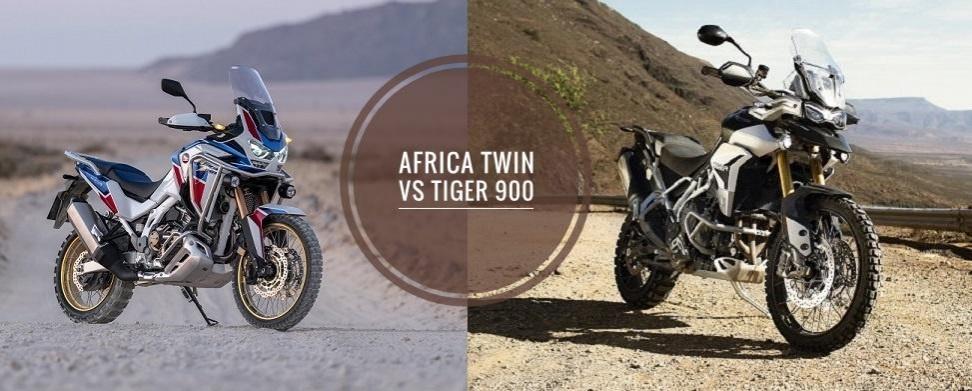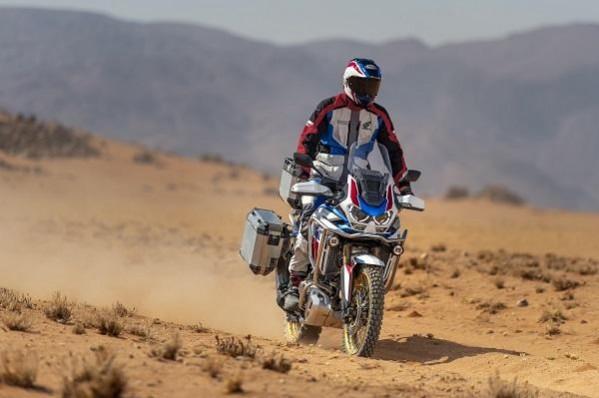Triumph India launched the new Tigers last week at a starting price of Rs 13.7 lakh (all prices mentioned in the story are ex-showroom, PAN India). Yes, that's the price I had predicted in our previous story almost a month ago. In fact, let me paraphrase what my inner Nostradamus had said in that story about the new Tigers' pricing:
1) Triumph might launch the Tiger 900 GT at Rs 13.7 lakh.
2) No one's going to buy it at that price.
3) The top-end Tiger 900 Rally Pro should not cross Rs 16 lakh.
Guess what? My predictions about the pricing (1 & 3 above) came true. I just pray that Triumph's potential customers don't let my prediction number two come true.
In that story, I had also explained all there is to know about the new Tigers. I even talked about the variants we aren't getting as of now. If you haven't read it already, please click here first, read it, and come back.
Please note that I wanted to bring in the BMW F 850 GS as well in this comparison; however, since BMW India has taken it off its website along with a few other models, including the 310s, and there's zilch clarity on whether these bikes would return as BS6 models, I am dropping it from this comparison for now.
Also, this is not at all a comparison review (which I'll aim for once the media units are available in Delhi), but a sort of a ready reckoner you'll go to for comparing the Africa Twin and Tiger 900 specifications.

There are three Tiger variants, and today I'm comparing the top-end Rally Pro with the Africa Twin's manual version as both cost nearly the same amount of money. The Triumph costs Rs 15.50 lakh whereas the Honda costs Rs 15.35 lakh. If you must know, the Africa Twin automatic (DCT) costs Rs 16.10 lakh. Let's start with the obvious: the powertains.
2020 Honda Africa Twin vs Triumph Tiger 900 Rally Pro: Horsepower and Torque
The 2020 Honda CRF1100L Africa Twin Adventure Sports (yes, that's the full nomenclature) has a 1,084 cc parallel twin with the firing interval set at 270 degrees. It produces 102 PS of peak power at 7,500 rpm and 105 Nm of peak torque at 6,250 rpm. It's quite an unstressed motor—the compression ratio is 10.1:1. Please note that HMSI (Honda Motorcyle and Scooter India) hasn't listed any of these specifications on its website. I have taken these from Honda's UK website.
The 2020 top-end Tiger continues to be an inline-triple, but like I told you in the previous story, the motor has seen an increase in cubic capacity and is now an 888 cc unit. More importantly, Triumph says that it's new "T-plane" crankshaft, with a firing order of 1-3-2, makes the latest Tiger as grunty and tractable low down as a V-twin, but without compromising the inline-triple's midrange and top-end performance. The spec sheet figures are: 95.2 PS at 8,750 rpm and 87 Nm at 7,250 rpm. The compression ratio is 11.27:1.
2020 Honda Africa Twin vs Triumph Tiger 900 Rally Pro: Dimensions and Fuel Tank Capacity
The Tiger is 935 mm wide (handlebar width), 1,502 mm tall (without mirrors), but the company hasn't disclosed how long it is. However, I shall stick my neck out and say that it's the Africa Twin that's longer. I'll tell you the reason in just a bit.
The Africa Twin is 2,334 mm long, 961 mm wide (Honda hasn't mentioned whether the width is measured at the handlebar or someplace else) and just 1,391 mm tall. Honda again hasn't mentioned whether that's with or without mirrors, which essentially means they've measured it at the windshield. But it doesn't make sense either as the top edge of the Africa Twin's windscreen cannot be shorter than the Tiger's height measured "without mirrors". I don't understand why Triumph will even talk about the mirrors when it's the top edge of the windshield that's the highest point on the bike? I know it sounds confusing but you will be able to understand if you read this paragraph slowly while simultaneously looking at the pictures of both the motorcycles.


Taking 'how' both manufacturers have presented the information, the only logical conclusion is that both are talking about the height measured up to the top edge of the windshield-mounting brace. Anyway, I will ask both the manufacturers to clarify and will update this story once I get the responses. As of now, it's the Triumph that's taller.
The Honda has a 1,575 mm wheelbase, while that of the Tiger measures 1,551 mm. And that's the reason I had said above that the Honda might be the longer motorcycle here. The Honda also has bigger fuel tank (24.8 L) while that of the Tiger (20 L) isn't small by any standards either.
2020 Honda Africa Twin vs Triumph Tiger 900 Rally Pro: Weight
I would reiterate that I have taken the Africa Twin specifications from Honda's UK website where the kerb weight of the bike is listed as 226 kg. Triumph always lists the dry weight of its motorcycles, and it's 201 kg for the Rally Pro. It got me thinking what would the dry weight of the Africa Twin be, then? Its engine oil capacity is nearly five liters and it takes in almost 25 liters of fuel. Even if I don't add the weight of the other liquids (coolant and brake oil) and the battery, it looks like the Africa Twin is the lighter motorcycle. Okay, I'll ask Honda to clarify this as well.
2020 Honda Africa Twin vs Triumph Tiger 900 Rally Pro: Suspension, Brakes, and Wheels
Both ADVs sport Showa 45 mm upside-down forks, and Showa monoshocks. Both forks are adjustable for preload, rebound, and compression, while both monoshocks are adjustable for preload and rebound. However, it's the Tiger that has more travel: 230 mm at the rear and 240 mm at the front. Honda India's website shows that the Africa Twin's rear-wheel travel is 220 mm, but it doesn't show anything for the front travel. Honda UK shows 230 mm.
However, it also shows the standard seat height as 850/870 mm (adjustable seat), whereas the Indian bike's seat height is 810/830 mm (adjustable as well). It makes me think that Honda might have compromised the front suspension travel on the Indian model. Refer to the "Triumph Tiger 900 GT Low" description in our previous story, and you'll know what I am talking about. By any chance, if Honda has not touched the front suspension and still managed to bring the saddle height down by 40 mm, its engineers deserve a medal. Alright, I hear you; I shall get clarification from Honda on this too.
Both motorcycles come with spoke-wheels and tubeless tyres. The front wheel is 21-inch in both, but the Honda has an 18-inch at the rear whereas the Triumph rolls on a 17 incher. Triumph has bigger front rotors (320 mm) though. The Africa Twin has 310 mm units. Triumph doesn't mention the size of the Tiger's rear disc. Honda UK does (for the Africa Twin, obviously), and 256 mm is the figure that's mentioned there.
2020 Honda Africa Twin vs Triumph Tiger 900 Rally Pro: Electronics & Gadgets
This is the section where both bikes are most evenly matched. Both get TFT colour LCDs, fixed and customizable ride modes, cornering ABS & traction control, cruise control, cornering lights, etc. You really wouldn't be left wanting for more in this department with either of these motorcycles.
And that's all the information-cum-analysis I have for you today. Do take the pain of commenting below your pick of these two. I shall strive to review both as soon as the media units are available in Delhi.












!['Had denied Housefull franchise as they wanted me to wear a bikini': Tia Bajpai on turning down bold scripts [Exclusive]](https://data1.ibtimes.co.in/en/full/806605/had-denied-housefull-franchise-they-wanted-me-wear-bikini-tia-bajpai-turning-down-bold.png?w=220&h=138)
![Nayanthara and Dhanush ignore each other as they attend wedding amid feud over Nayanthara's Netflix documentary row [Watch]](https://data1.ibtimes.co.in/en/full/806599/nayanthara-dhanush-ignore-each-other-they-attend-wedding-amid-feud-over-nayantharas-netflix.jpg?w=220&h=138)



![India Auto Roundup: Maruti Suzuki, Mahindra have exciting launches in November [details here]](https://data1.ibtimes.co.in/en/full/805520/india-auto-roundup-maruti-suzuki-mahindra-have-exciting-launches-november-details-here.jpg?w=220&h=135)